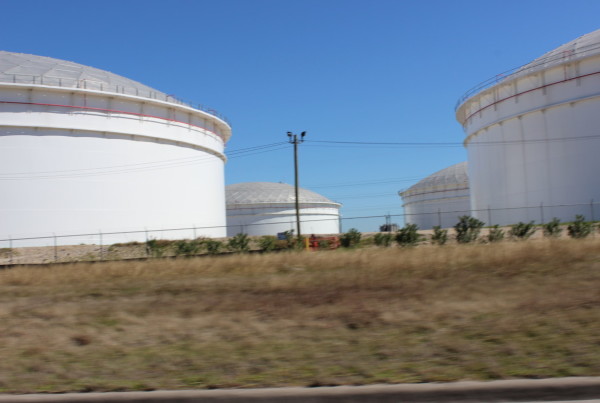Liquified natural gas has never been exported from the lower 48 – until now. A tanker has docked at Cheniere Energy’s Sabine Pass terminal between Texas and Louisiana, ready to be loaded with shale gas.
The ship’s been anchored off the coast since January, so its arrival in the Sabine Pass carries the kind of drama that causes TV networks to cutaway to show pictures of the tanker. And there’s another in its wake. Naureen Malik, writer for Bloomberg News, says the export is the first of its kind from the United States.
“The lower 48 states have never exported natural gas to countries that we don’t have free trade agreements with,” Malik says. “So, we’ve been shipping natural gas by pipeline to Canada and to Mexico, but never from the lower 48 to places like Europe or South America or Asia.”
The key there is “lower 48.” Back in 1969, Alaska had an agreement to send natural gas to Japan, but it was a “specialized deal,” Malik says. But since the oil boom and resulting glut, the United States has so much gas that it’s time to export it.
But with that comes the danger of fueling the glut. The exports are basically just adding to the global oversupply, so there are certainly disadvantages that come along with the advantage of shipping the gas away.
“This is actually coming at a pretty bad time,” Malik says. “On one hand, it’s great there’s a new outlet for US gas, it can get off these shores and go to another market. But now the US is going to actually be adding to this emerging global gas glut.”
But by now, so much money has been put into natural gas production and exporting facilities. So options are limited. Is this any way to run an industry?
“I don’t know if the industry has figured out another way to run itself,” Malik says. “That’s the problem right now, there’s about 50 billion dollars worth of investments on just constructing these export terminals in the US alone. Oversees, you have like Australia and other markets building a lot more.”















